This is a financial promotion for The First Sentier Global Listed Infrastructure Strategy. This information is for investors in the UK and elsewhere where lawful. Investing involves certain risks including:
- The value of investments and any income from them may go down as well as up and are not guaranteed. Investors may get back significantly less than the original amount invested.
- Currency risk: the Fund invests in assets which are denominated in other currencies; changes in exchange rates will affect the value of the Fund and could create losses. Currency control decisions made by governments could affect the value of the Fund's investments and could cause the Fund to defer or suspend redemptions of its shares.
- Single sector risk: investing in a single economic sector may be riskier than investing in a number of different sectors. Investing in a larger number of sectors helps to spread risk.
- Charges to capital risk: The fees and expenses may be charged against the capital property. Deducting expenses from capital reduces the potential for capital growth.
- Listed infrastructure risk: the infrastructure sector and the value of the Fund is particularly affected by factors such as natural disasters, operational disruption and national and local environmental laws.
Emerging market risk: Emerging markets tend to be more sensitive to economic and political conditions than developed markets. Other factors include greater liquidity risk, restrictions on investment or transfer of assets, failed/delayed settlement and difficulties valuing securities. For details of the firms issuing this information and any funds referred to, please see Terms and Conditions and Important Information.
For a full description of the terms of investment and the risks please see the Prospectus and Key Investor Information Document for each Fund.
If you are in any doubt as to the suitability of our funds for your investment needs, please seek investment advice.
Prices & performance
Show fund factsheets & data
Strategy overview
Issuer:Key facts
ASX announcements

The iNAV reflects the estimated NAV per unit in respect of the Fund’s assets that have live market prices during the trading day. The issuer of the Fund has engaged ICE Data Indices, LLC as iNAV calculation agent to independently calculate the iNAV.
* iNAV calculations as shown (the "data") are provided by ICE Data Indices, LLC or its third party suppliers and are updated during ASX trading hours. iNAV calculations are indicative and for reference purposes only. The Fund is not sponsored, endorsed, sold or marketed by ICE Data Indices, LLC, its affiliates ("ICE Data") and ICE Data or its respective third party suppliers MAKE NO EXPRESS OR IMPLIED WARRANTIES, AND HEREBY EXPRESSLY DISCLAIM ALL WARRANTIES OF MERCHANTABILITY OR FITNESS FOR A PARTICULAR PURPOSE WITH RESPECT TO THE iNAV, FUND OR ANY FUND DATA INCLUDED THEREIN. IN NO EVENT SHALL ICE DATA HAVE ANY LIABILITY FOR ANY SPECIAL, PUNITIVE, DIRECT, INDIRECT, OR CONSEQUENTIAL DAMAGES (INCLUDING LOST PROFITS), EVEN IF NOTIFIED OF THE POSSIBILITY OF SUCH DAMAGES. You acknowledge that the data is provided for information only and should not be relied upon for any purpose.
Strategy Overview
This Fund is an Irish domiciled UCITS fund marketed in the UK under the Overseas Fund Regime (OFR). The Fund is not subject to the UK sustainability disclosure and labelling regime.
Key Facts
Strategy Overview
Key Facts
Infrastructure to shape our future
We invest in the companies our societies are built on. These are companies solving for the world’s long-term challenges such as urban congestion, digital mobility, and the energy transition. We are active investors. We invest for future generations in mind, because a more sustainable world means better outcomes for our investors.
Why invest in the First Sentier Global Listed Infrastructure strategy?
Listed infrastructure provides essential services to society, making it less sensitive to the economic cycle.
Growth is being driven by long-term structural themes such as the build-out of renewable energy, the need to ease urban congestion, and increasing reliance on mobile data.
Focus on environmental stewardship1 and social license to operate2 supports long-term, sustainable returns to shareholders.
Effecting change through ongoing engagement and dialogue with companies.
Global Listed Infrastructure strategies
Global Listed Infrastructure strategy
Listed infrastructure provides essential services to society, making it less sensitive to the economic cycle.
Growth is being driven by long term structural themes such as the build-out of renewable energy; the need to ease urban congestion; and increasing reliance on mobile data.
Focus on environmental stewardship1 and social license to operate2 ensures long term, sustainable returns to shareholders.
Effecting change through ongoing engagement and dialogue with companies.
Non-label disclaimer
Sustainable investment labels help investors find products that have a specific sustainability goal. This product does not have a UK sustainable investment label as it does not have a non-financial sustainability objective. Its objective is to achieve long-term capital growth by following its investment policy and strategy.
Meet the investment team
Peter Meany
Andrew Greenup
Edmund Leung
Rebecca Sherlock
Glossary
Liquidity: refers to the speed and ease with which financial assets can be sold in the market without dramatically affecting the price. Highly liquid assets are quickly sold with little-to-no price impact; highly illiquid assets may take a long time to sell and their prices can change significantly.
1 The use of investor rights and influence to protect and enhance overall long-term value for clients and beneficiaries, including the common economic, social and environmental factors on which their interests depend.
2 The ongoing acceptance of a company or industry’s standard business practices and operating procedures by its employees, stakeholders and the general public.
Get the right experience for you
Your location :  United Kingdom
United Kingdom
Australia & NZ
-
 Australia
Australia -
 New Zealand
New Zealand
Asia
-
 Hong Kong (English)
Hong Kong (English) -
 Hong Kong (Chinese)
Hong Kong (Chinese) -
 Singapore
Singapore -
 Japan
Japan


















